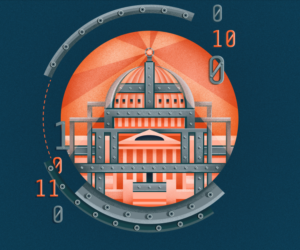
Sorry, your browser is not compatible with this application. Please use the latest version of Google Chrome, Mozilla Firefox, Microsoft Edge or Safari.
Ransoming Government: What State and Local Governments Can Do to Break Free from Ransomware Attacks
In December 1989, computer researcher Jim Bates popped a floppy disk into the disk drive and was shocked at what he saw. On a disk labeled “AIDS Information Version 2.0,” he found, hidden among files containing information on AIDS and the HIV virus, a virus of another kind: a program designed to encrypt the root directory of a computer. A few months before, this same disk had made its rounds at a world conference on AIDS. Any researchers unfortunate enough to insert the disk were greeted by large red screen demanding that US $189 be mailed to a post office box in Panama if they wished to use their computer again. This was the world’s first ransomware.
While distribution and payment methods may have advanced beyond floppy disks and post office boxes, the basics of ransomware largely remain the same: Hackers gain access to a system and, once in, use malware to lock data behind complex encryption; in order to regain access to that data, victims must pay a ransom ranging from a few hundred dollars to several millions.
Interested in ransomware? Check out this GovWhitePapers blog post! You can also find ransomware events on our sister site, GovEvents.

| Format: |
|
| Topics: | |
| Website: | Visit Publisher Website |
| Publisher: | Deloitte |
| Published: | March 11, 2020 |
| License: | Copyrighted |
| Copyright: | © 2020. See Terms of Use for more information. |
Featured Content

Contact Publisher


Claim Content





